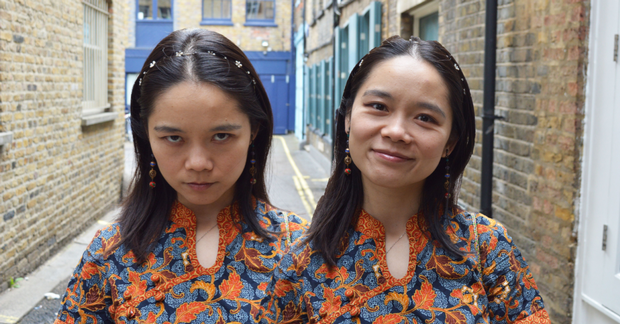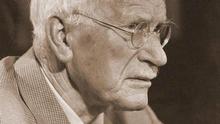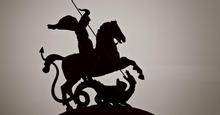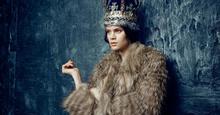Archetype & Personality Type: From Theoretical to Personal
When people have been presented with the same information, have you ever wondered how they can come to such different conclusions? Have you noticed that some people are quick to decide, whereas others take much longer? Personality type may play some part in these problem-solving differences. In this three-part series, Dr. Yvonne Nelson-Reid explains Gordon Lawrence’s Z-Model for problem-solving using personality type (Part 1: The Z-Model, Part 2: The Z-Model Ideal vs Actual, and Part 3: Z-Models for the 16 MBTI® Personality Types).
Personality type theory provides an effective model for understanding how we naturally approach problem solving. Understanding our personality type makes us aware of what kinds of information we trust (Sensing or Intuition), and the criteria (Thinking or Feeling) we count on when deciding. How you approach decision-making will look different based on your personality type preferences. Our personality strengths and stretches stand out. We may miss out on important information, and not even know it.
Personality type for young people, as represented by the Murphy-Meisgeier Type Indicator for Children® assessment, is based upon the Myers-Briggs® model of four-letter personality types (ISTP, ENFJ, INTJ, INFP, etc.). Your natural problem-solving preferences are represented by the two middle letters of this type code. For example, someone with a preference for ESFJ will naturally use their Sensing preference (S; gather facts) to take in information and their Feeling preference (F; values and impact on people) to come to conclusions, but they may neglect using their nonpreferred Intuition (N; consider new possibilities) and Thinking preferences (T; logical outcomes), leading to imbalanced decision-making. And young people, who are still developing, may focus most of their energy on only one of these mental processes; in the case of ESFJ preferences, this would be the Feeling preference, which typically develops first for this personality type, briefly accessing their Sensing preference and neglecting the others altogether. This is where knowing the problem-solving model using personality type comes in handy!
The Z-Model for Problem Solving
The Z-Model for problem solving based on personality type was developed and first introduced by Gordon Lawrence, PhD (1979), as the Zig-Zag ProcessTM. He credits Isabel Briggs Myers for the original concept of using all four mental processes for effective problem solving and builds upon her theory by placing them into a Z-shaped diagram, the Z-Model.
The Z-Model introduces the importance of using both perceiving mental processes, Sensing (S) and Intuition (N), when taking in information and both judging mental processes, Thinking (T) and Feeling (F), when deciding, recognizing that how we naturally access them will vary depending upon our personality type. By using all four mental processes there is potential for clearer perceptions and sounder judgments, which promotes effective and responsible decision-making.
The Z-Model, as seen in the diagram below, involves four steps using the mental processes:
- Describe the problem and gather the facts (Sensing).
- Use your imagination to consider new possibilities (Intuition).
- Analyze logically the pros and cons of each possibility (Thinking).
- Consider values and the impact on the people involved (Feeling).
[image_1]
Effective Problem Solving
According to type theory, most of us have a natural bias when it comes to making decisions. We do not access each step equally or with the same level of competence. Based upon our type preferences, or strengths, we will naturally gather information using the Sensing or Intuition perceiving mental process. People who prefer Sensing, for example, will look at the problem realistically while considering facts and details from a practical stance and focusing on both the past and present. Whereas, with an Intuition preference, people begin by exploring possibilities, other ways of looking at the problem, implications, connections, and themes. Both are necessary, but where we begin often depends upon our own personality type preferences. We tend to begin with our strength, and, in some instances, we may not even consider our stretch. Put another way, if you prefer Intuition, you may not ask the questions typical of a Sensing preference, or you may rush through it and miss out on important information.
When deciding, most of us will start with either the Thinking or Feeling judging mental process. The natural tendency for a Thinking preference approach to deciding tends to be objective, detached, and impersonal. They consider pros and cons, logical consequences, and an analytical analysis. Whereas someone who prefers Feeling typically takes an empathetic approach. Decisions are made based on how each option fits with their own values or the values of others. Considering the impact their decision will have on the people involved takes precedence over an impersonal analysis. In the same way that we tend to rely on our strengths when gathering information, people tend to rely on their type preferences for deciding as well. If they prefer Feeling they may neglect the Thinking preference, and vice versa, yet both are required for effective decision-making.
The point here is that effective decision-making uses all the mental processes. Since we prefer one kind of perception (S or N) and one kind of judgment (T or F), we tend to focus on our strengths and overlook contributions from our stretches. What do we need to learn to become more effective problem solvers? We need to learn how to access our stretches. Practice, using the Z-Model, can help develop these. The Z-Model provides a solution to balanced and responsible decision-making. Personally, we can honor our strengths and learn how to access our stretches for better decision-making. Interpersonally, knowing, understanding, and valuing our different decision-making styles supports constructive use of our differences and helps us all to appreciate and learn from one another, leading to less conflict and more effective, responsible decision-making overall.
Here are some type-related questions to help you access and use all four preferences when making important decisions. Some of these questions come naturally because they represent your personality strengths, whereas others may be challenging as you stretch into undeveloped parts of your personality.
Give it a try and see if using this model helps you make better decisions!
[image_2]































_thumb.png)
_thumb.png)
_thumb.png)
_thumb.png)

